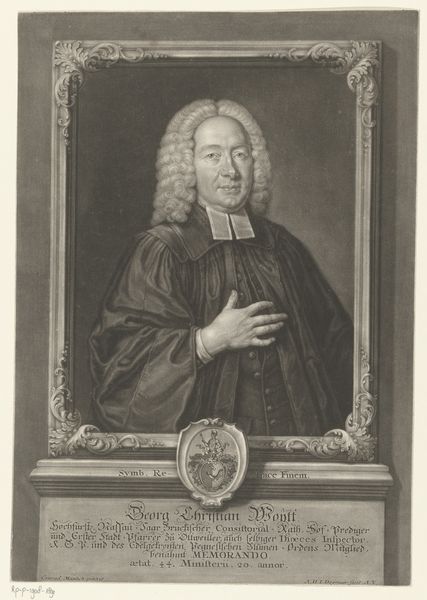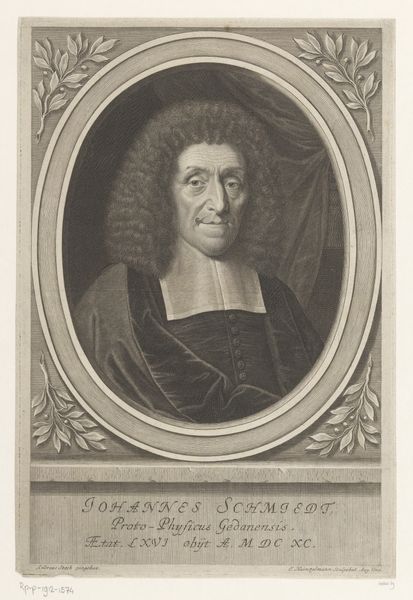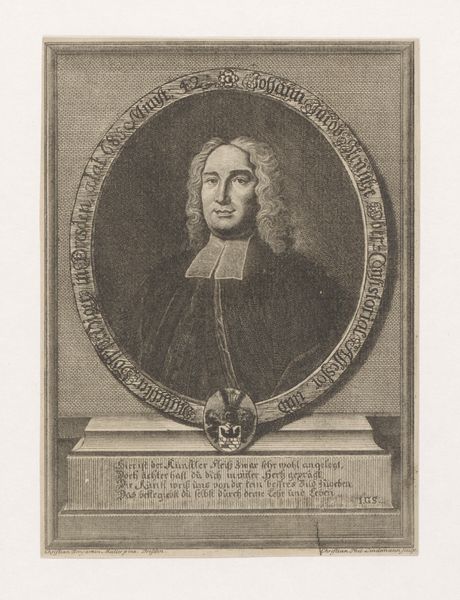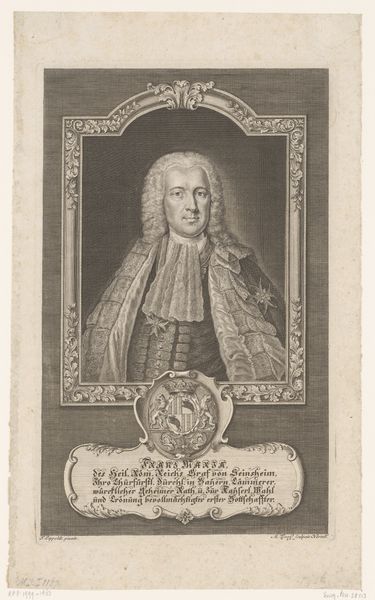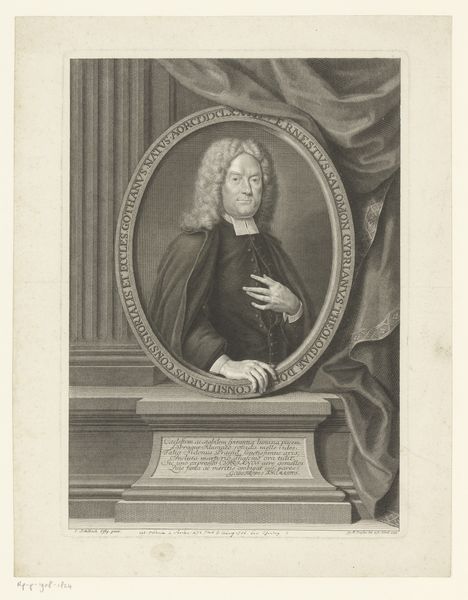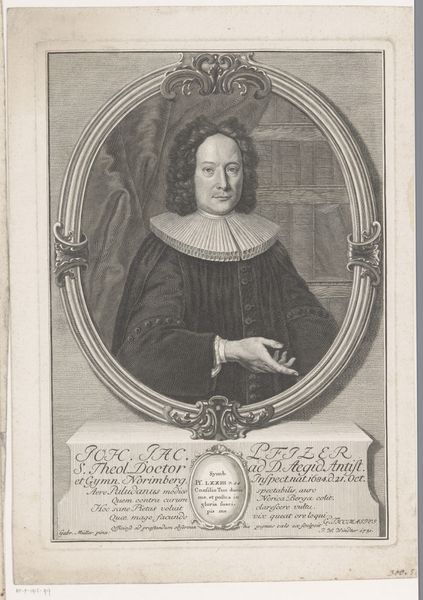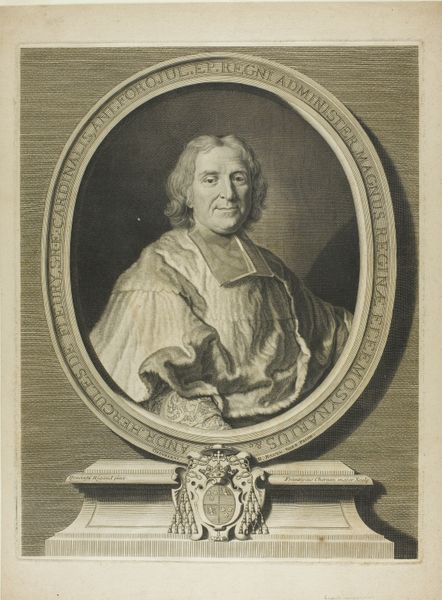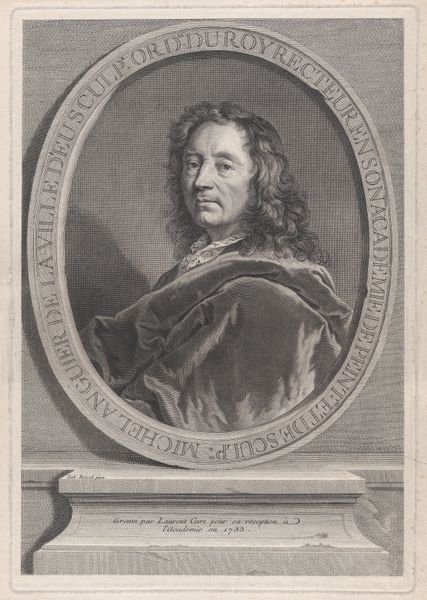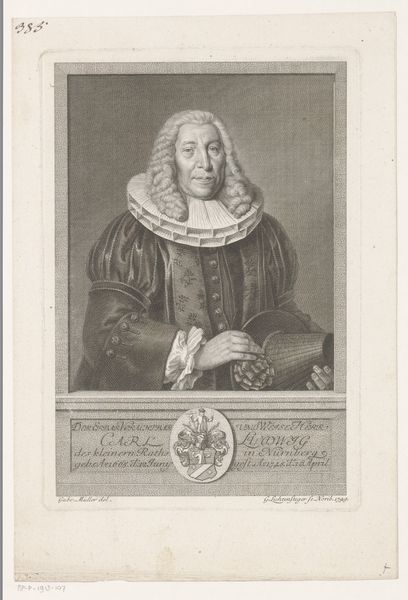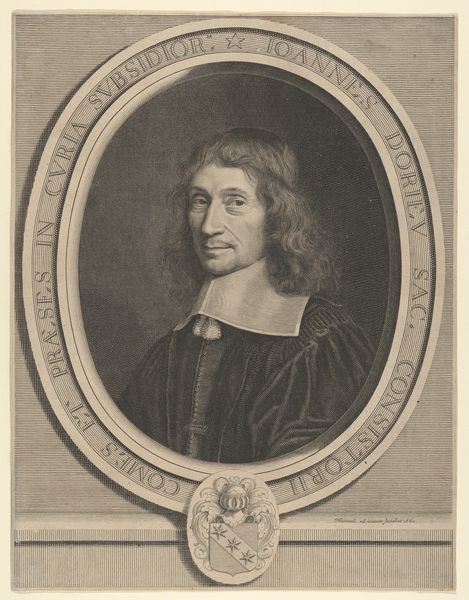
print, engraving
#
portrait
#
pencil drawn
#
baroque
# print
#
charcoal drawing
#
pencil drawing
#
history-painting
#
engraving
Dimensions: height 390 mm, width 264 mm
Copyright: Rijks Museum: Open Domain
Editor: So, this is Johann Ernst Gericke's "Portret van Michael Roloff" from 1748, a print located here in the Rijksmuseum. I’m struck by the level of detail achievable through engraving, and the intricate frame around the portrait. How should we think about it? Curator: Well, let’s consider the production of this print. Engraving was a highly skilled craft, demanding significant labor. Who was producing these portraits and for what audience? The materials used – the copperplate, the inks – were commodities within a specific economic system. We must investigate the context of artistic production to unveil the economic forces shaping these images. Editor: That makes sense. It feels like these prints would be relatively available because, like, aren’t they reproducible, unlike paintings? What's the impact of printmaking in creating a kind of visual commodity? Curator: Exactly! Printmaking democratized images, making portraiture accessible beyond the elite. But it also created a new market. Consider the status conferred on Roloff through this printed image. The engraving is meticulously crafted; think of it as labor materialized to amplify Roloff's societal position. Editor: Right, like the frame. It gives this image that look of high society. How much labor went into making just one of these, let alone copies? Curator: Precisely! The ornate frame underscores that this wasn’t mere duplication. The craftsmanship enhances Roloff’s standing. Reflect upon the engraver's labor. Their technical skill becomes intertwined with Roloff’s status. Editor: That's fascinating, the idea that the material and the means of production directly reflect the sitter's social standing. It gives me a whole new appreciation for this work! Curator: Indeed, shifting our focus to production, material, and consumption offers a profound lens to interpret historical images. This portrait isn't just an image, but also a window onto the economic and social realities of its time.
Comments
No comments
Be the first to comment and join the conversation on the ultimate creative platform.
